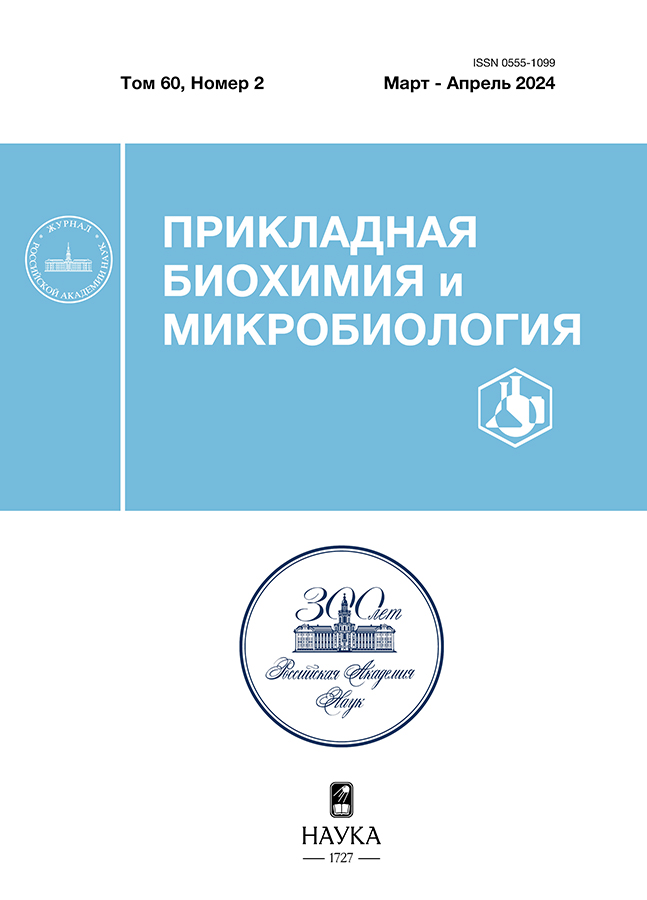Functional derivatives of chitosan, soluble in neutral medium as drugs and genetic material carrier: preparation and properties
- Autores: Gorshkova M.Y.1, Gigoryan E.S.1, Volkova I.F.1
-
Afiliações:
- A. V. Topchiev Institute of Petrochemical Synthesis RAS
- Edição: Volume 60, Nº 2 (2024)
- Páginas: 134-142
- Seção: Articles
- URL: https://rjeid.com/0555-1099/article/view/674563
- DOI: https://doi.org/10.31857/S0555109924020028
- EDN: https://elibrary.ru/GBFIMA
- ID: 674563
Citar
Texto integral
Resumo
Method of chitosan modification, providing controlled addition of the quaternized block has been proposed. The structure of the products obtained were studied by FT-IR and NMR spectroscopy; their solubility and acid-base properties was characterized by turbodimetry and potentiometry, respectively. Presence about 50% of quaternized amino groups was shown to be necessary to obtain soluble products. The difference in pH-sensitivity of modified derivatives with different types of quaternized block attachment was revealed by studying their interaction with a model polystyrene sulfonate anion. The possibility of preparing complexes based on the obtained derivatives with DNA — polyplexes, stable under conditions close to physiological ones has been demonstrated. It was shown the presence of primary amino groups on the polycation chains leads to a decrease in the polyplexe size. The data obtained can form the basis for development of drug and genetic material delivery system.
The 2-stage method of chitosan modification providing controlled addition of the quaternized block has been proposed. The structure of the products obtained were studied by FT-IR and NMR spectroscopy; their solubility and acid-base properties was characterized by turbodimetry and potentiometry, respectively. The presence about 50% of quaternized amino groups was shown to be necessary to obtain soluble products. The difference in pH-sensitivity of modified derivatives with different types of quaternized block attachment was revealed by studying their interaction with a model polystyrene sulfonate anion. The possibility of preparing complexes based on the obtained derivatives with DNA, polyplexes stable under conditions close to physiological ones has been demonstrated. It is shown that the presence of primary amino groups on the polycation chains leads to a decrease in the polyplexe size. The data obtained can form the basis for development of drug and genetic material delivery systems.
Texto integral
Sobre autores
M. Gorshkova
A. V. Topchiev Institute of Petrochemical Synthesis RAS
Autor responsável pela correspondência
Email: mgor@ps.ac.ru
Rússia, 119991, Moscow
E. Gigoryan
A. V. Topchiev Institute of Petrochemical Synthesis RAS
Email: mgor@ps.ac.ru
Rússia, 119991, Moscow
I. Volkova
A. V. Topchiev Institute of Petrochemical Synthesis RAS
Email: mgor@ps.ac.ru
Rússia, 119991, Moscow
Bibliografia
- Harugade A., Sherje A. P., Pethe А. // React. Func. Polym. 2023. V. 191. P. 105634. https://doi.org/10.1016/j.reactfunctpolym.2023.105634
- Verma D., Okhawilai M., Goh K. L., Thakur K. V., Senthilkumar N., Sharma M., Uyama H. // Environ. Res. 2023. V. 235. P. 116580. https://doi.org/10.1016/j.envres.2023.116580
- Горшенин Д. С., Жернов Ю. В., Кривцов Г. Г., Хаитов М. Р. // Иммунология. 2020. Т. 41. № 5. C. 470–478. https://doi.org/10.33029/0206-4952-2020-41-5-470-478
- Iqbal Y., Ahmed I., Irfan M. F., Chatha S. A. S., Zubair M., Ullah A. // Carbohyd. Polym. 2023. Р. 121318. https://doi.org/10.1016/j.carbpol.2023.121318
- Tang W., Wang J., Hou H., Li Y., Wang J., Fu J. et al. // Int. J. Biol. Macromol. 2023. V. 240. P. 124398. https://doi.org/10.1016/j.ijbiomac.2023.124398
- Горшкова М. Ю., Волкова И. Ф., Алексеева С. Г., Молоткова Н. Н., Скорикова Е. Е., Изумрудов В. А. // Высокомо-лекулярные cоединения. Сер. А. 2011. Т. 53. № 1. C. 60–69.
- Yevlampieva N. P., Gubarev A. S., Gorshkova M. Yu., Okrugin B. M., Ryumtsev E. I. // J. Polym. Res. 2015. V. 22. P. 166. https://doi.org/10.1007/s10965-015-0802-7
- Izumrudov V. A., Volkova I. F., Gorshkova M. Yu. // Eur. Polym. J. 2013. V. 49. P. 3302–3308. https://doi.org/10.1016/j.eurpolymj.2013.07.003
- Faizuloev E., Marova A., Nikonova A., Volkova I., Gorshkova M., Izumrudov V. // Carbohydr. Polym. 2012. V. 89. № 4. P. 1088–1094
- Wan A., Xu Q., Yan Sun Y., Li H. // J. Agric. Food Chem. 2013. V. 61. P. 6921–6928. https://doi.org/10.1021/jf402242e
- Gruškienė R., Deveikytė R., Makuška R. // Chemija. 2013. V. 24. № 4. P. 325–334.
- Belalia R., Grelier S., Benaissa M., Coma V. // J. Agric. Food Chem. 2008. V. 56. P. 1582. https://doi.org/10.1021/jf071717
- Dormard A., Rinaudo M., Terrassin C. // Int. J. Biol. Macromol. 1986. V. 8. P. 105–107.
- Makuska R., Gorochovceva N. // Carbohydr. Polym. 2006. V. 64. № 2. P. 319–327.
- Holappa J., Nevalainen T., Savolainen J., Soininen P., Elomaa M., Safin R., Suvanto S., Pakkanen T., Masson M., Loftsson T., Järvinen T. // Macromolecules. 2004. V. 37. № 4. P. 2784–2789.
- Lim S. H., Hudson S. M. // Carbohydr. Res. 2004. V. 339. № 2. P. 313–319.
- Olins D. E., Olins F. L., von Hippel P. H. // J. Mol. Biol. 1967. V. 24. № 2. P. 157–176. https://doi.org/10.1016/0022-2836(67)90324-5
- Cai G., Jiang H., Tu K., Wang L., Zhu K. // Macromol. Biosci. 2009. V. 9. P. 256–261. https://doi.org/10.1002/mabi.200800153
- Loubaki E., Sicsic S., Le Goffic F. // Eur. Polym. J. 1989. V. 25. P. 379–384.
- Беллами И. Новые данные по ИК-спектрам сложных молекул. М: Мир, 1971. 318 с.
- Nakanishi Von K. Infrared Absorption Spectroscopy. Tokio: Verlag Holden-Day, Inc., San Francisco und Nankodo Co. 1962.
- Леви Г., Нельсон Г. Руководство по ЯМР 13С для химиков-органиков. М.: Мир, 1975.
- Le Roy F., Jolnson, Jankowski W. G. Carbon 13C-NMR Spectra. New York; London; Sidney, Toronto: Wiley, 1972.
Arquivos suplementares

















